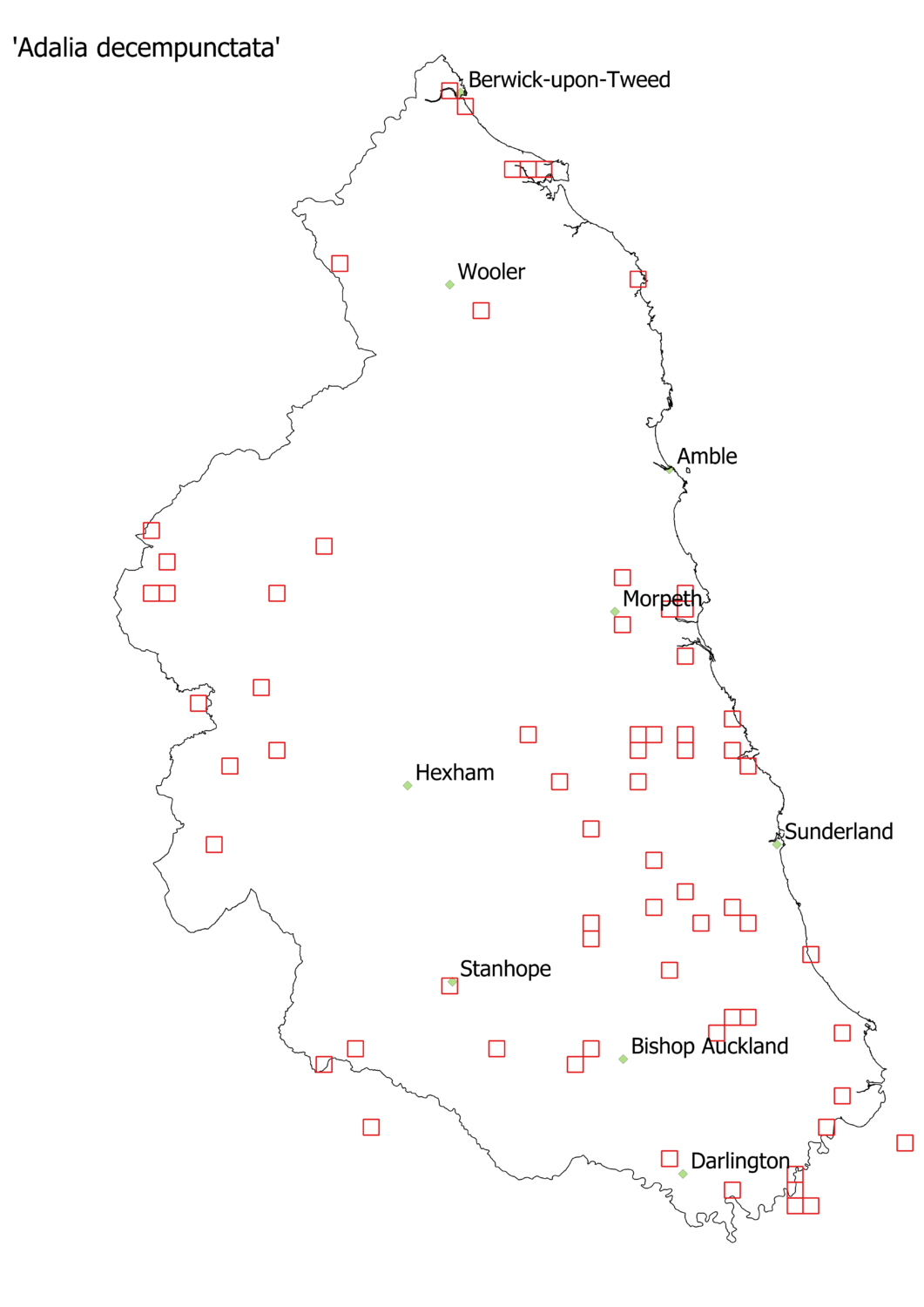The 10-spot Ladybird is the most variable ladybird in Britain, often found on deciduous trees in woodland and urban areas.
Fast facts
- Common name(s)
- 10-spot Ladybird
- Scientific name
- Adalia decempunctata
- When to see it
- Year round
- Diet
- Aphids
Description
The 10-spot Ladybird is the most variable ladybird in Britain. This ladybird is usually found on deciduous trees and hedgerows in woodland and urban areas.
Identification
Adults
Adults can be red or black with 0 – 15 spots and are 3.5 to 4.5 mm in length. The typical form is orange-red and has 0 – 15 black spots, with six forming a row in the middle and one spot on each shoulder. The pronotum (plate behind the head) is white with dark spots that can fuse together. This ladybird has brown legs. There are three common forms which are described below.
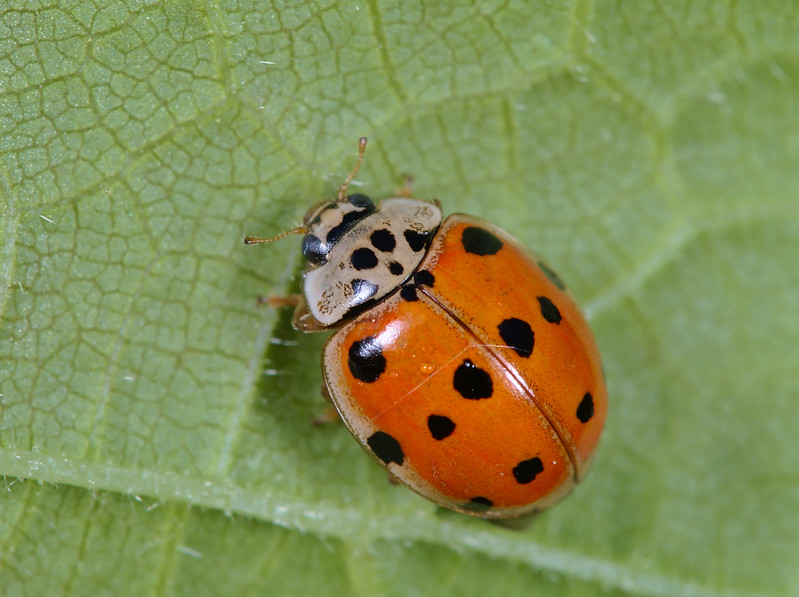
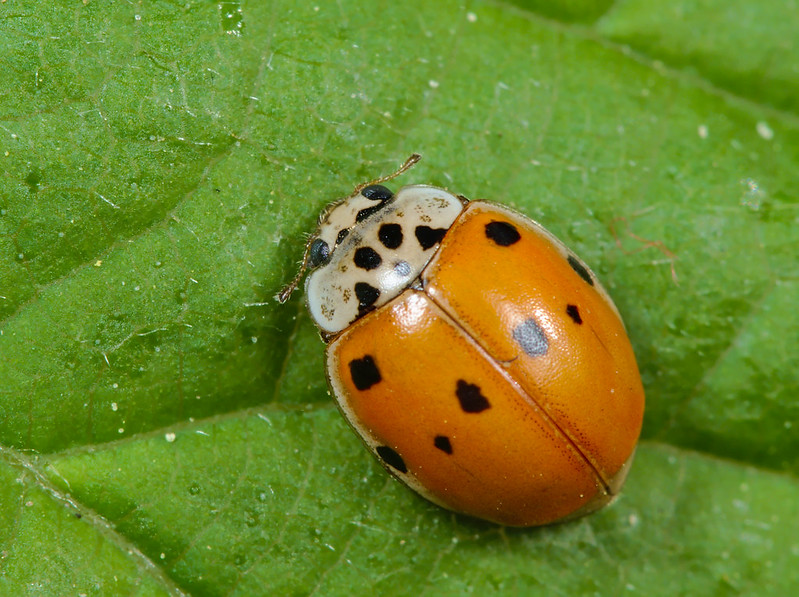
| Form | Elytra colour | Pattern |
| ‘Typical form’ f. decempunctata | Yellow, orange or red | 0 – 15 dark spots |
| ‘Chequered form’ f. decempustulata | Brown or black | Chequered pattern with light grid-like markings |
| ‘Melanic form’ f. bimaculata | Purple, dark brown or black | Two shoulder flashes that are yellow, orange or red |
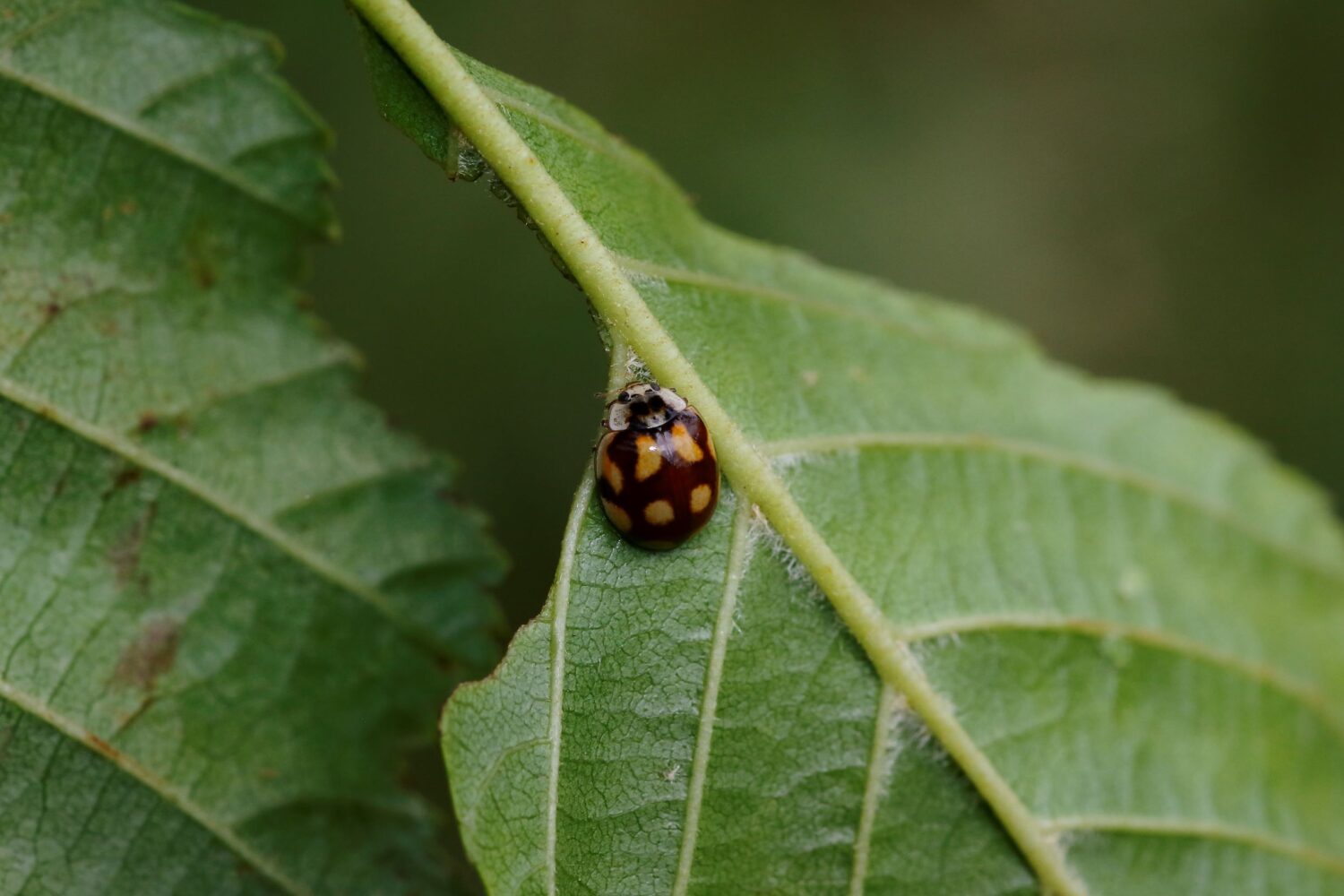
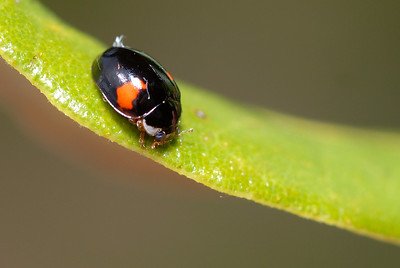
Larvae
Late stage larvae are pale grey with yellow spots on the first and fourth abdominal segments that are arranged in a triangle. 2-spot larvae are similar but have orange spots.
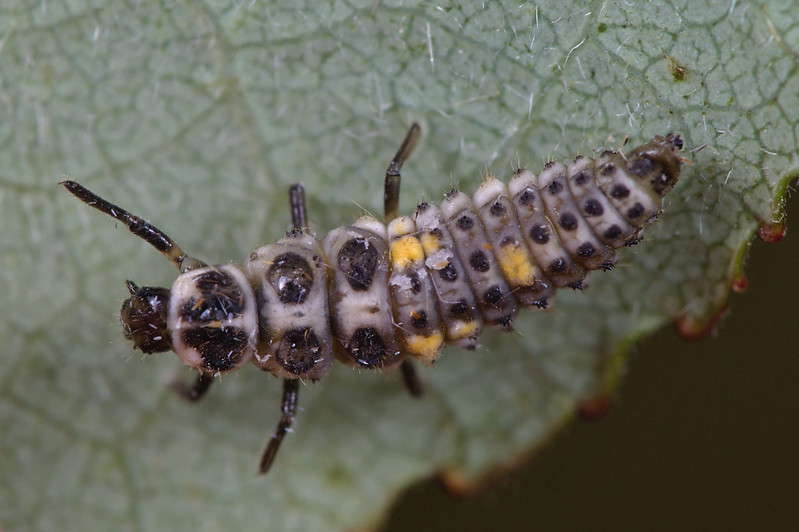

Pupae
10-spot pupae are black with cream markings and six rows of dark spots running down the back. Two orange spots are on the edges of the first abdominal segment and a row of three orange spots in the middle of abdominal segments four to six. Pupae resemble the pupae of 2-spot Ladybirds.
Spotted this ladybird?
Share your sighting of the 10-spot Ladybird and other North East Ladybird Spot target species to contribute to the conservation and study of our region’s ladybirds.
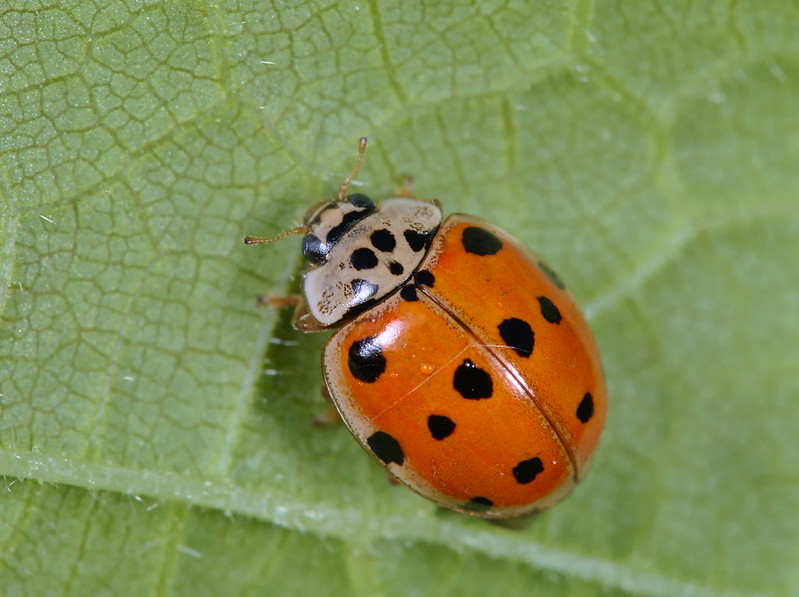
Similar species
Two other common ladybirds have forms that are similar to the typical form of the 10-spot Ladybird (f. decempunctata). The typical form of the 2-spot Ladybird (f. typica) has a white pronotum with a black M-mark. The 2-spot Ladybird is one of the Ladybird Spot target species and its species profile can be found here.
The Harlequin Ladybird (f. succinea) is larger and domed. It also has a white pronotum with a black M-mark or solid trapezoid marking. The Harlequin Ladybird is one of the Ladybird Spot target species and its species profile can be found here

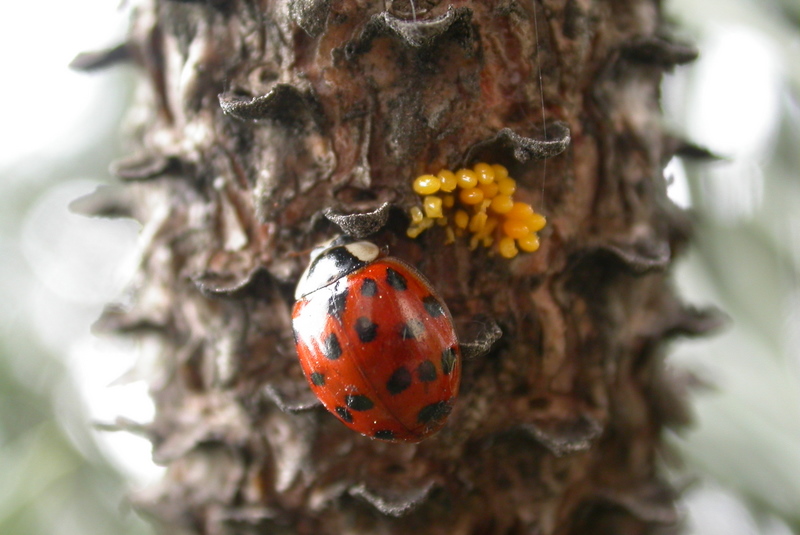
Ecology
Adults can be found throughout the year and the 10-Spot Ladybird has one or, sometimes, two generations a year in the UK. The 10-spot Ladybird is usually found on deciduous trees and hedgerows in woodland and urban areas, but has also been recorded from herbaceous plants such as Nettle, Hogweed, thistles, Rosebay Willowherb, Fat-hen and in a range of habitats.
This species overwinters in leaf litter, plant debris and Beech mast.
Did you know?
The 10-spot ladybird is active by day, but will sometimes come to light at night and so, is occasionally found when moth trapping.
Regional Distribution
More common in the south of the region, the records of the 10-spot Ladybird are most frequent in urban areas and along the coast. This species is widely distributed across Britain and Ireland but absent from northern Scotland.
